JOIN the AFICIONADOS
Get the insider news and lowdown on what we've been up to, where we've been, and who we've met along the way. Be the first to discover new places and get the scoop on our favourites.
Each summer, as the meadows of Alta Badia shimmer in Alpine light, a quiet awakening of form and thought descends upon the Dolomites. This is SMACH, South Tyrol’s open-air biennale of site-specific art, where installations bloom across the mountains like alpine edelweiss with minds of their own. Now in its seventh edition, SMACH 2025 carves its inspiration from a singular Ladin word: CU.
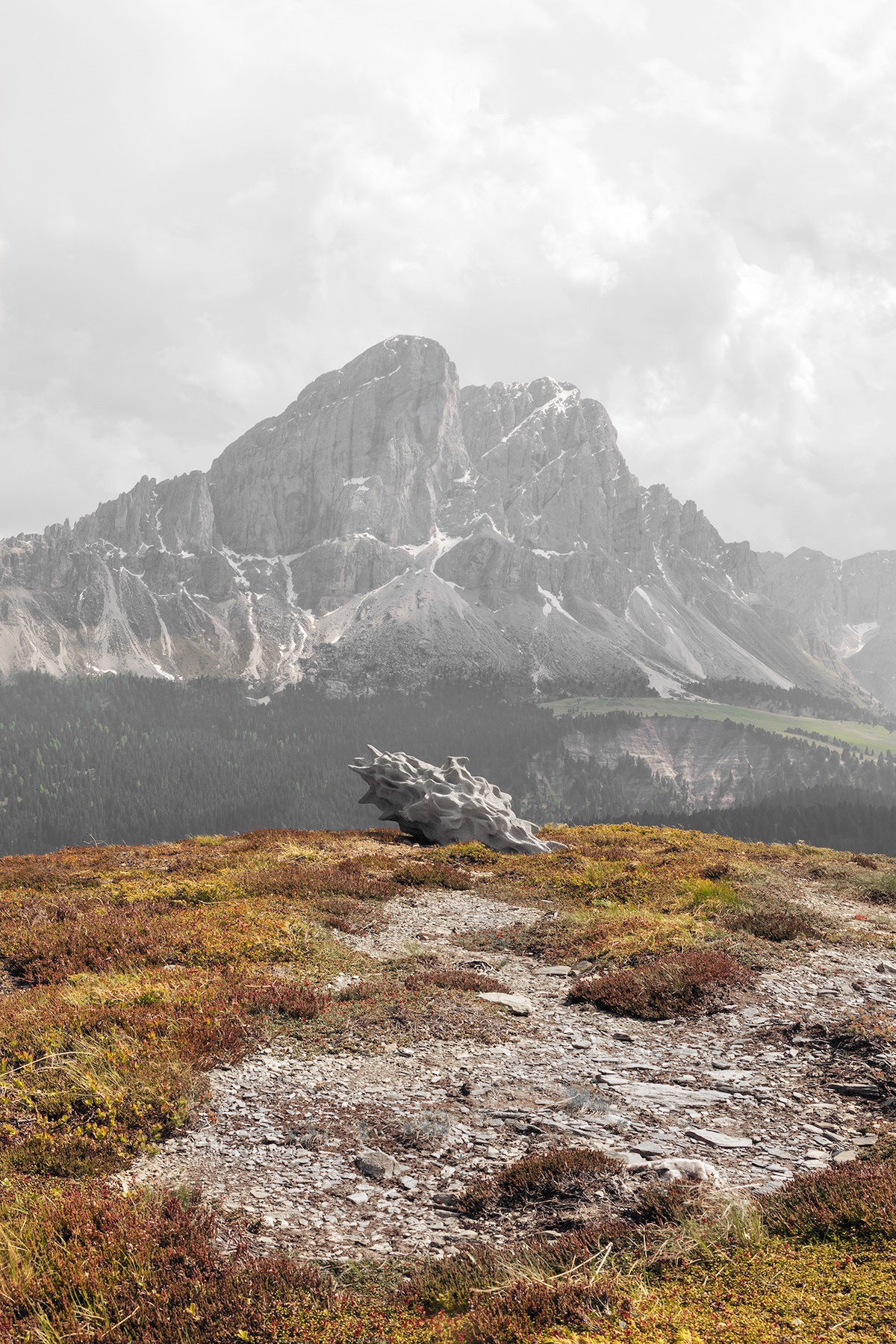
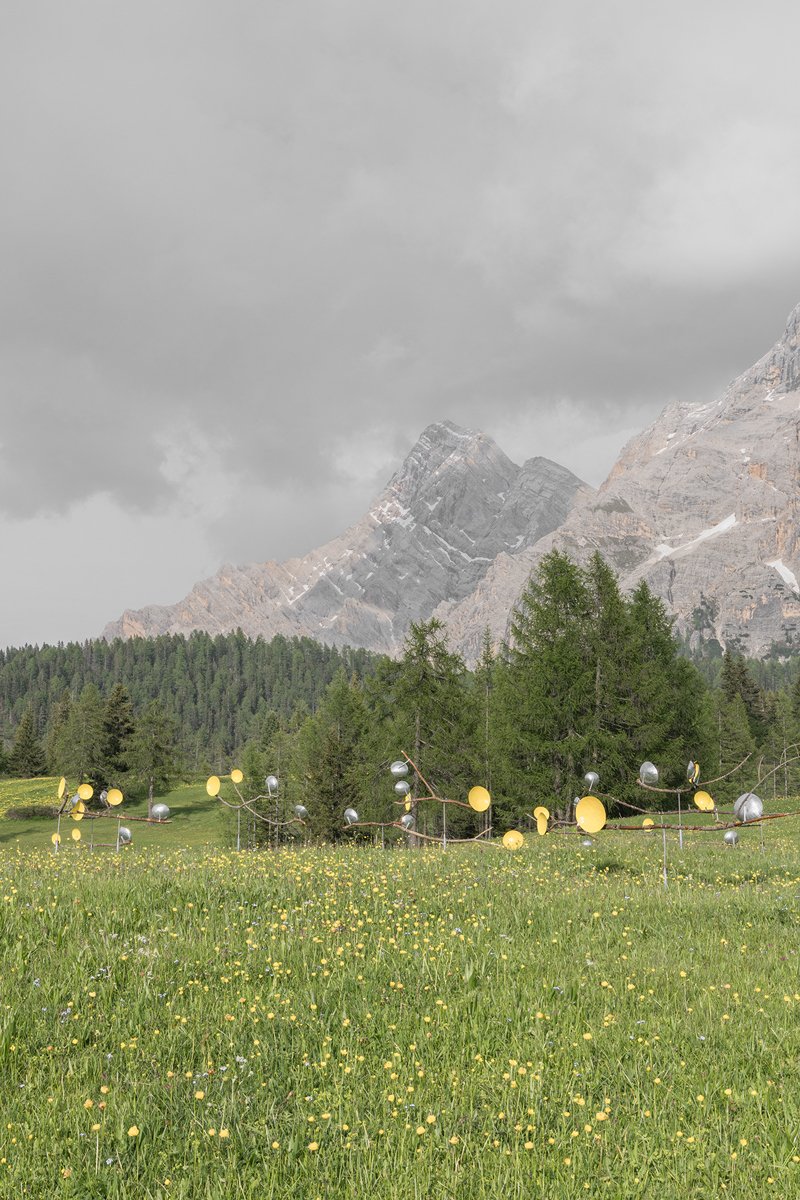
CU is the whetstone. Simple, precise, enduring. A tool of toil, used to sharpen the scythe for meadow-mowing by hand, still practised by a few quietly defiant souls in the valleys. In choosing this elemental object, SMACH invites not spectacle but reflection, a poetic calibration of past, present and the possibilities still latent in our hands.
This year, ten international artists respond to the ‘cu’ with works that speak of craft, memory, resilience and ritual. It is sculpture as question, installation as whetstone. Grinding back the noise, sharpening what remains essential.
Among the standouts is Valerio Tedeschi, who reimagines the whetstone not as object but action. His piece hums with kinetic movement, echoing the repetitive rasp of blade against stone. Nearby, Caroline Achaintre creates a textile relic, soft and surreal, as if the spirit of the meadow itself had woven its own memory into wool.
Daniel González elevates the tool to architectural scale. His shimmering mobile installation, suspended between pine trunks, glints like a blade in morning light, drawing parallels between craftsmanship and spectacle. Kubra Khademi, by contrast, delves into ancestral femininity, placing hand-forged forms into the Alpine earth as acts of defiance and sacred continuation.
Then there is the hypnotic, ephemeral work of Yves Mettler, who maps the geography of sharpening. He transforms Alpine coordinates into a soundscape that loops with the grace of old tools meeting stone. The result is part cartography, part incantation.
Each work becomes a point on a pilgrimage trail through Ladinia’s myth-soaked topography. From the silent woods to the shepherd’s high pasture, the art is inseparable from place, from air, altitude and all.
There is a stark poetry in that. The biennale does not preserve heritage in amber. Instead, it sets it humming with contemporary resonance. It asks what tools we still carry, and whether we remember how to use them.
Unlike the white-cube sterility of most biennales, SMACH unfolds entirely outdoors. Its gallery walls are made of sky and Dolomite limestone. The air is scented with pine and the faint tang of goat, and the audience hikes, climbs and stumbles into the art. There is no separation between body and terrain, no curation without altitude.
This is a slow biennale. To see it all is to trek through the valleys of San Vigilio, San Martin and Badia. Places where Ladin language still lingers like song, and each CU is more than metaphor. It is embedded.
The artworks remain in situ until autumn, changing with the weather, dissolving with the fog. Some will leave no trace at all.
And perhaps that is the point.
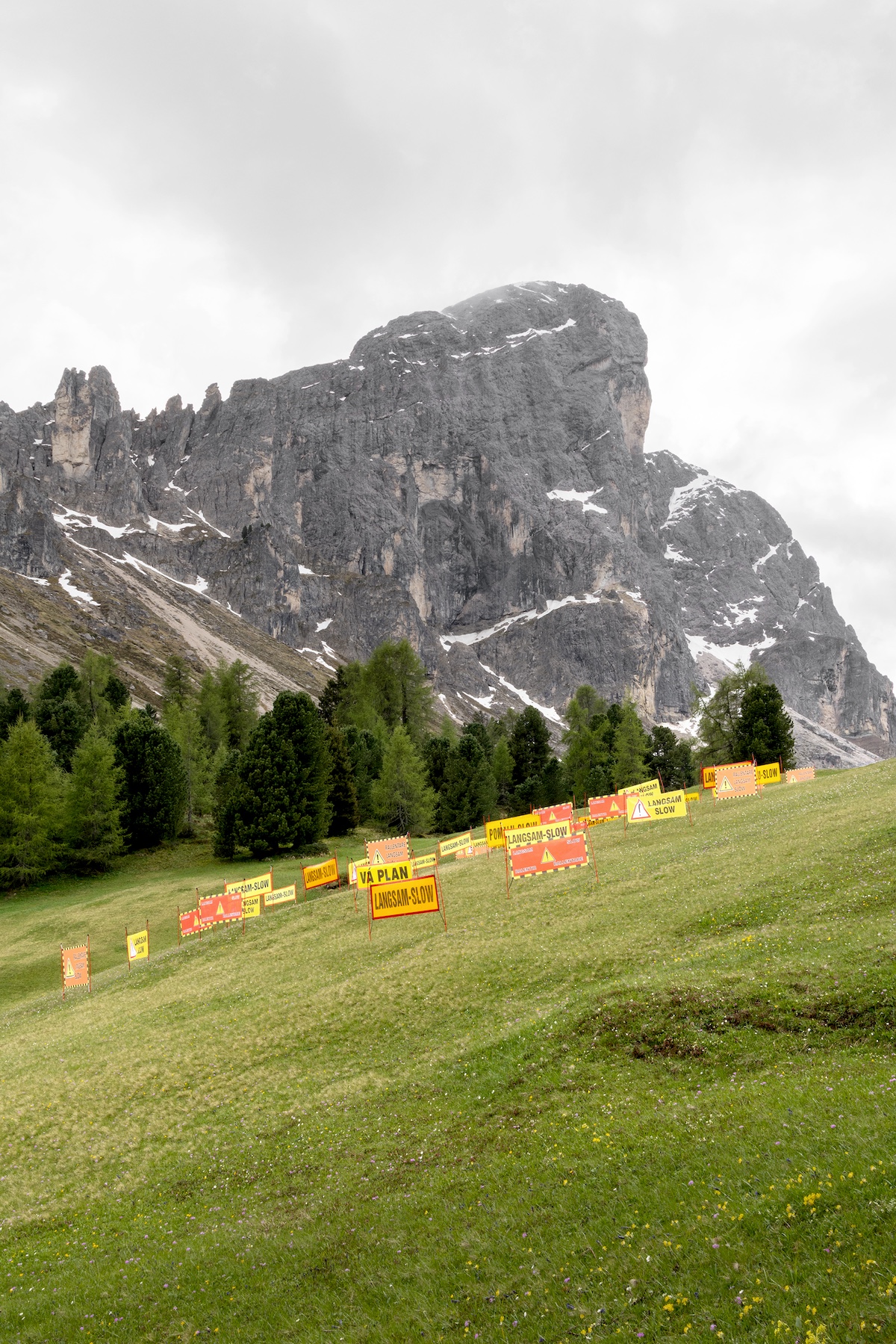
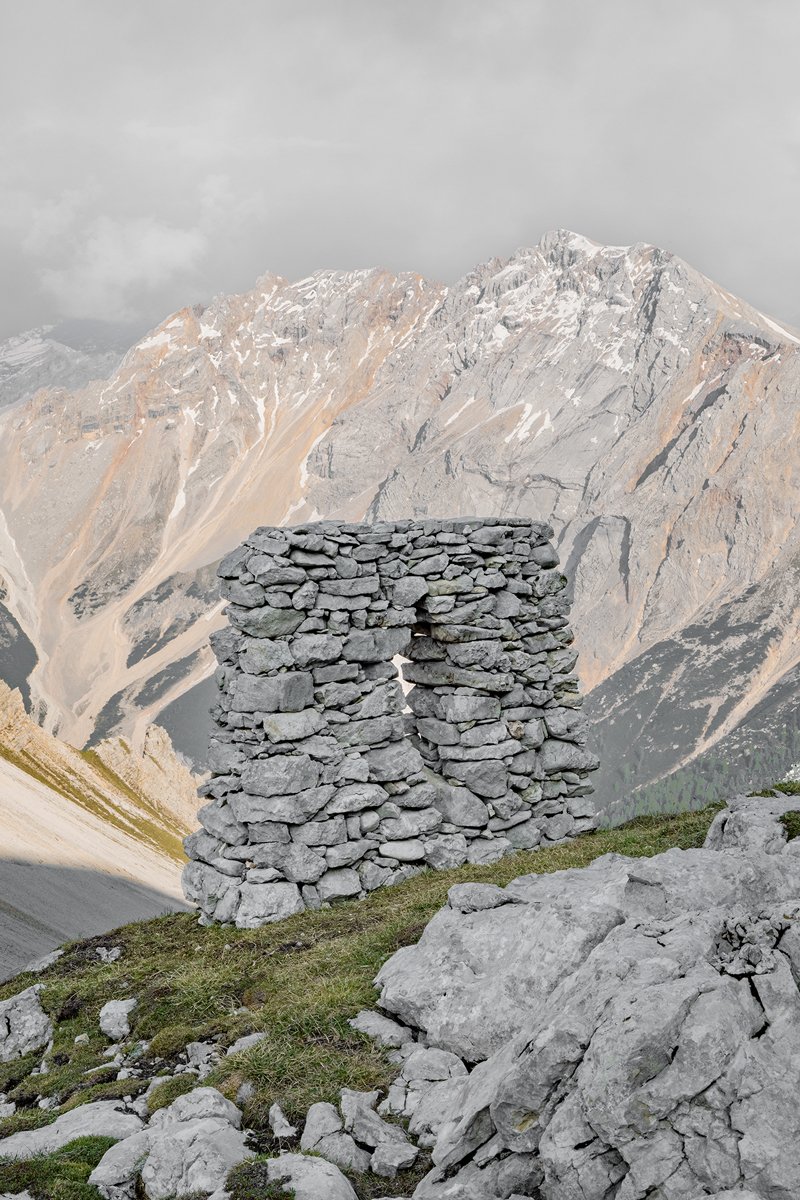
A biennale where memory cuts deeper than marble, and the humblest stone carries the weight of the world.
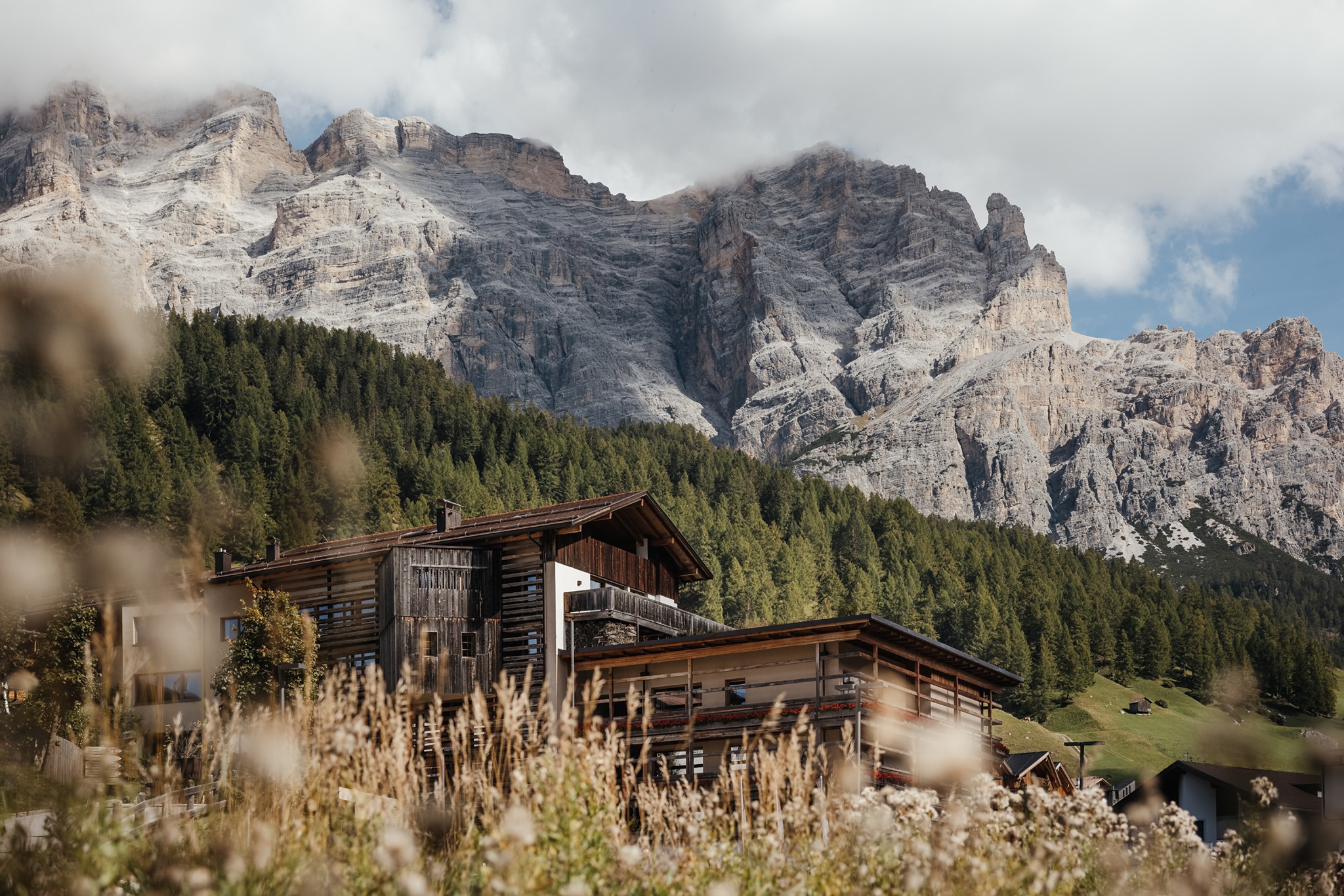
For those tracing the SMACH Biennale through the high meadows and Ladin villages of Val Badia, Lagació Hotel Mountain Residence in San Cassiano offers an ideal base. A soulful blend of Alpine restraint and refined comfort, this eco-conscious stay draws on Ladin traditions, natural materials and a deep sense of place.
Here, stone, larch and loden echo the textures of the land; suites open to Dolomite peaks; and mornings begin with an organic breakfast in a timbered stube. After a day of high-altitude art and contemplative trekking, return to the hush of La Palsa spa, where the sauna gazes out over the summits and silence becomes part of the ritual.
Lagació is rooted in the rhythm of the mountains, shaped by heritage and led by design — a perfect companion to SMACH’s own ethos of material memory and mountain imagination.